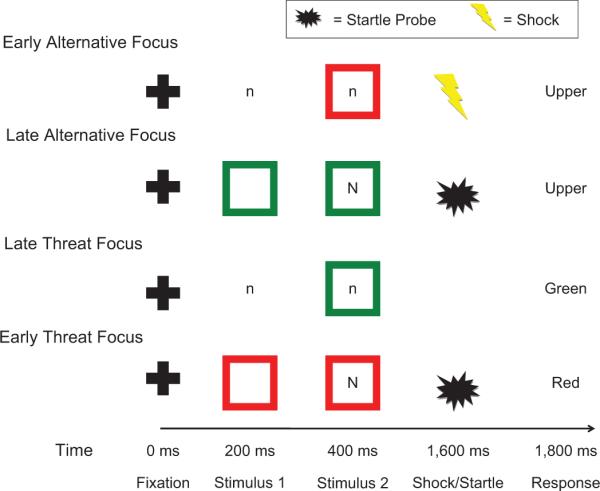Fig. 1.

Trial structure in the four conditions used in the experiment. Every trial began with a fixation cross lasting 200 ms, after which participants saw two stimuli: a box (colored red or green) and a letter (an uppercase N or a lowercase n). The order of these two stimuli varied with condition. The first stimulus appeared alone at 200 ms, and then the second stimulus appeared concurrently with the first at 400 ms. In all four conditions, electric shocks were administered after some red boxes but never after green boxes. Following the offset of the stimuli, a blank screen appeared. White-noise startle probes were presented at 1,600 ms into the trial (i.e., during the blank screen) to measure fear-potentiated startle. At 1,800 ms, a descriptive word related to the color of the box or the case of the letter (i.e., “Green” or “Red” for threat-focus blocks; “Upper” or “Lower” for alternative-focus blocks) appeared on the screen. Participants had to indicate whether the word matched (or mismatched) the relevant feature presented during that trial.
